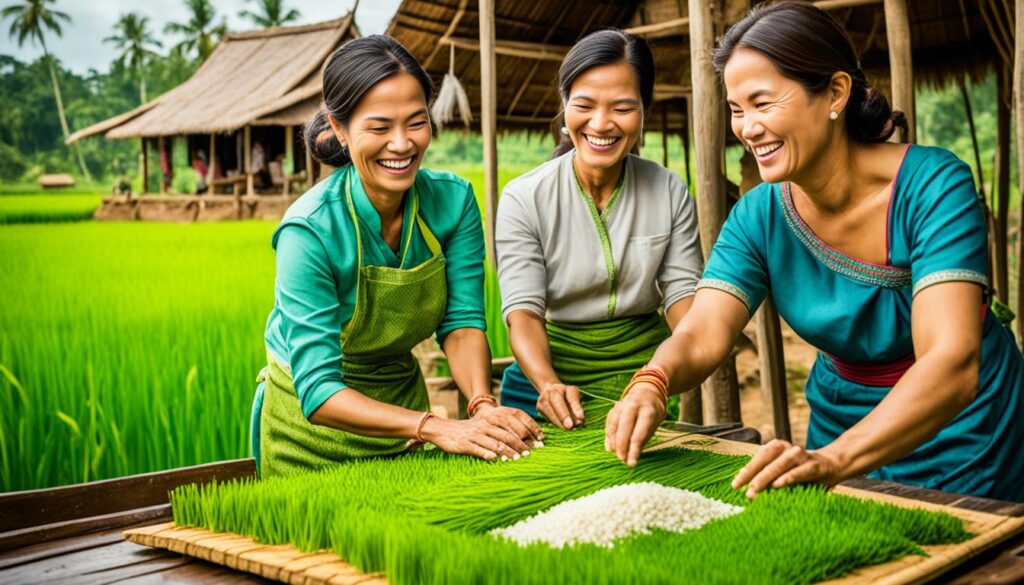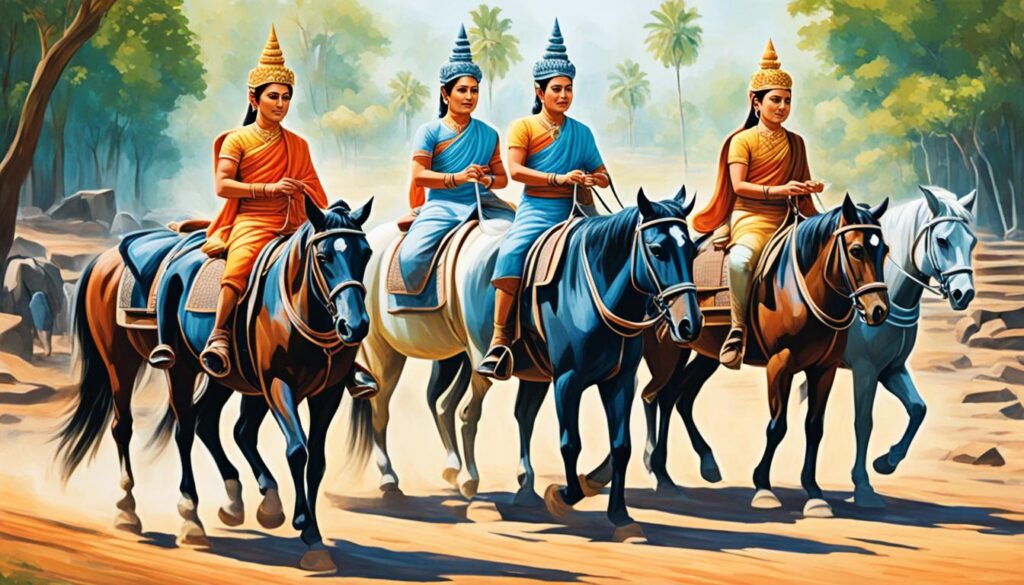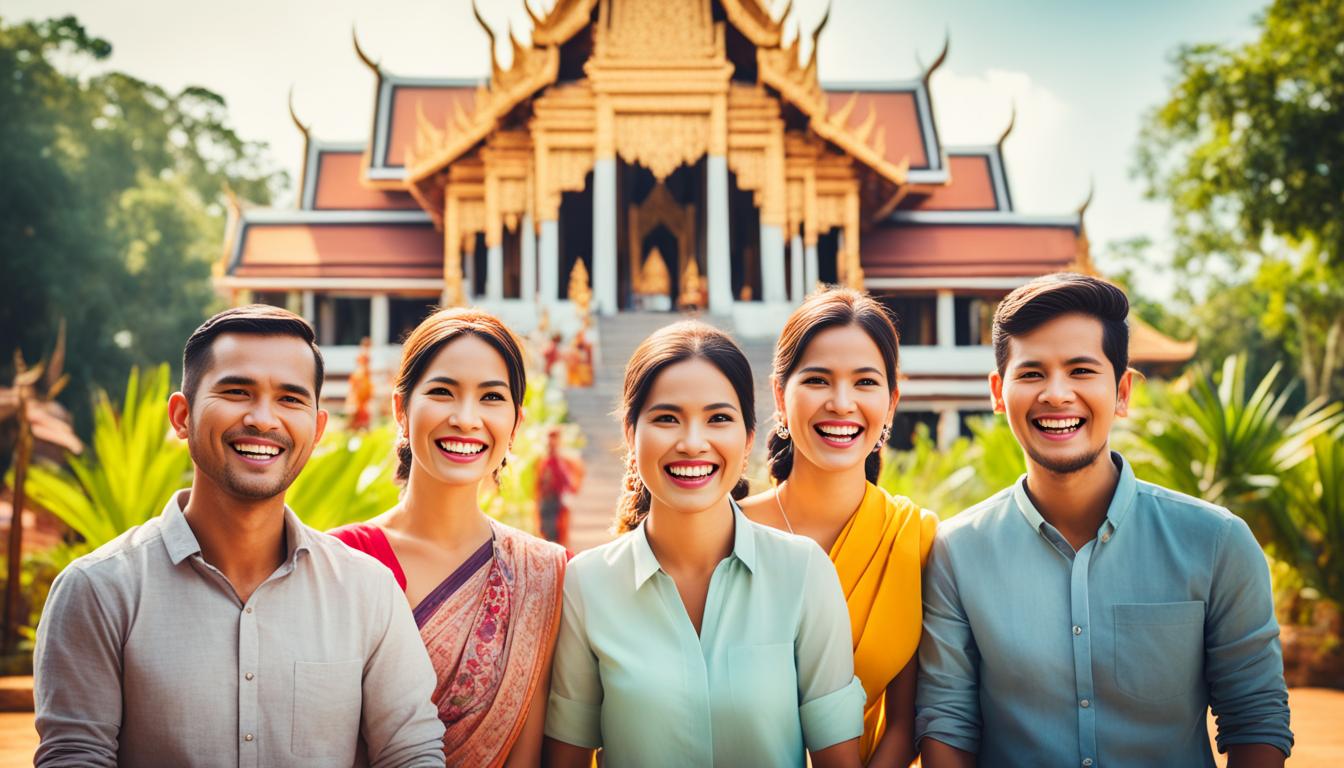Northern Khmer, also known as Surin Khmer or Thai Khmer, is a fascinating dialect that holds a rich cultural heritage. Spoken by Khmers native to the Thai provinces of Surin, Sisaket, Buriram, and Roi Et, this dialect is distinct from the standard Khmer language in terms of pronunciation, vocabulary, and grammar.
In this article, we will delve into the unique features of the Northern Khmer language, explore its historical background, and discover its cultural aspects. We will also examine the language status, demographics, and linguistic features that make Northern Khmer an important part of Thailand’s linguistic and cultural tapestry.
Join us on this linguistic journey as we unveil the beauty and significance of the Northern Khmer language and its impact on the Northern Khmer culture.
Historical Background
The presence of Khmer speakers in the lower northeast region of Thailand has a deep-rooted history dating back to the time of the Khmer Empire. After the fall of the empire, the Thai kingdom’s influence began to rise, eventually leading to the annexation of the former Cambodian province of Surin. This marked the beginning of a gradual assimilation process, where the Khmer residents became de facto subjects of the Thai monarchy.
During this period, the Northern Khmer dialect started to develop independently from the central dialect of Khmer due to political and economic isolation. The region’s unique history and various linguistic influences, including Thai influence, have contributed to the distinct accent, vocabulary, and phonemic differences observed in the Northern Khmer dialect.
“The historical background of the Khmer Empire and the subsequent Thai influence played a significant role in shaping the linguistic changes that gave rise to the Northern Khmer dialect.”
Linguistic Changes in Northern Khmer
| Linguistic Aspect | Changes in Northern Khmer |
|---|---|
| Vowel Phonemes | Increased variety and number of vowel phonemes compared to standard Khmer |
| Consonantal Distribution | Differences in the distribution of consonant sounds |
| Lexicon | Distinct vocabulary influenced by the historical context |
| Grammar | Grammatical differences specific to Northern Khmer |
| Pronunciation | Distinct accent, particularly in the pronunciation of syllable-final /r/ |
The historical background and linguistic changes in the Northern Khmer dialect highlight the intricate relationship between language and culture. Understanding the linguistic nuances of the dialect provides valuable insights into the cultural heritage of the Northern Khmer people.
Cultural Aspects
The Northern Khmer people have preserved their rich Khmer cultural traditions, including their distinctive traditional clothing, vibrant music, and unique religious beliefs.
Traditional Clothing
Traditional clothing holds immense significance in Northern Khmer culture. Many individuals continue to wear sarongs adorned with intricate patterns and vibrant colors, reflecting their cultural heritage. These sarongs are an essential part of their identity and are worn on special occasions and important events.
Music and Dance
Music plays a central role in the lives of the Northern Khmer people. The Khmer violin, also known as a tro khmer, is a popular musical instrument that accompanies traditional dances and folk songs. Pleng kantrum, a unique style of Khmer folk music, is widely enjoyed and performed during village gatherings and celebrations. The captivating melodies and rhythmic movements reflect the cultural vitality of the Northern Khmer community.
Religious Beliefs
The Northern Khmer people practice a harmonious blend of Theravada Buddhism, the dominant religion in the region, and indigenous beliefs. Alongside Buddhist rituals and practices, they also engage in spirit worship, honoring ancestral spirits and seeking their protection. Divination, in the form of fortune-telling rituals, is another prevalent aspect of their religious beliefs, offering guidance and insights into personal and communal matters.
Furthermore, Northern Khmer households maintain spirit shelves, both inside their homes and near their entrances, where they place offerings to spirits and pay respects to deceased family members. These small altars are centers of spirituality and serve as a reminder of the enduring connection between the living and their ancestors.

Despite the influence of Thai culture and the prevalence of the Thai language in the region, the Northern Khmer people actively celebrate and preserve their unique cultural heritage. Through their traditional clothing, music, and religious practices, they foster a sense of identity, continuity, and pride in their Northern Khmer roots.
Language Status and Demographics
Most Northern Khmer speakers are bilingual, with proficiency in both Northern Khmer and the national language of Thailand, Thai. However, the use of Northern Khmer is primarily limited to domestic and village settings.
“The Northern Khmer language is an integral part of our everyday life within our communities. It strengthens our cultural identity and allows us to connect with our roots.”
– Local Northern Khmer speaker
In the past, there were active discouragements against speaking Northern Khmer in formal educational settings in order to promote proficiency in Thai. As a result, only a small number of Northern Khmer speakers are able to read or write the language.
The demographics of Northern Khmer speakers have shifted over time, and while exact figures may have changed, the language continues to have a significant presence in Thai provinces such as Surin, Sisaket, and Buriram.
Bilingualism and Cultural Preservation
The ability of Northern Khmer speakers to navigate between the Northern Khmer dialect and Thai has facilitated communication and integration within Thai society. However, the dominance of the Thai language in formal education and public institutions has contributed to a decline in literacy rates and limited opportunities for the written preservation of Northern Khmer.
Efforts to preserve and revitalize the Northern Khmer language have gained momentum in recent years, driven by community initiatives and increased awareness of the cultural importance of linguistic diversity. Various organizations, including local cultural and educational institutions, have implemented programs and resources aimed at promoting Northern Khmer literacy among younger generations.
“Language nourishes our identity and connects us to our ancestors. Preserving Northern Khmer ensures that our cultural heritage thrives for generations to come.”
While challenges remain, the resilience of Northern Khmer speakers in preserving their language reflects their commitment to their cultural heritage and the importance of maintaining linguistic diversity within the Thai demographic landscape.
Linguistic Features
The Northern Khmer dialect of Thailand exhibits a range of distinctive linguistic features that distinguish it from other Khmer dialects. These features include variations in vowel and consonant phonemes, as well as differences in lexicon, grammar, and pronunciation.
Vowel and Consonant Phonemes
One notable aspect of Northern Khmer is its greater variety and number of vowel phonemes compared to other Khmer dialects. This richness in vowel sounds contributes to the unique accent of Northern Khmer speakers. Additionally, the consonantal distribution in the dialect differs from the standard Khmer language, further adding to its distinctiveness.
| Vowel Phonemes | Consonant Phonemes |
|---|---|
| /a/ | /p/ |
| /e/ | /t/ |
| /i/ | /k/ |
| /o/ | /s/ |
| /u/ | /m/ |
Script
In terms of writing, Northern Khmer utilizes the Thai script with adaptations to represent sounds unique to Northern Khmer that are not easily conveyed within the Thai orthography. The use of the Thai script allows for the incorporation of Northern Khmer into the broader Thai linguistic landscape, while still preserving its distinct linguistic identity.

Despite being primarily a spoken dialect, efforts have been made to promote literacy in Northern Khmer through education programs and cultural initiatives.
This focus on preserving and revitalizing the linguistic heritage of Northern Khmer is essential to ensuring its continued existence and enriching the linguistic diversity of Thailand.
Conclusion
The Northern Khmer language and culture have demonstrated remarkable resilience in the face of political and cultural changes. Despite the pervasive influence of the Thai language and culture, the Northern Khmer people have managed to preserve their unique linguistic and cultural heritage.
In recent years, there have been concerted efforts to revitalize and preserve the Northern Khmer language and culture. These initiatives have led to an increased awareness and usage of the language, promoting a stronger sense of cultural identity and belonging among the Northern Khmer community.
Through these endeavors, cultural preservationists and language advocates aim to empower the Northern Khmer people, ensuring that their language and cultural traditions are passed down to future generations. By celebrating and actively using the Northern Khmer language, it remains a vital thread in the rich linguistic and cultural tapestry of Thailand.
